How to adjust your ecommerce strategy for the new normal online retail landscape

Presented by:
Josi Mathar — 2020
If brands and retailers have learned anything from the present-day challenges, it would be that things at times take unexpected turns. More so, that these might be revolutionary. Together with Alice Gheissari, Shopper Marketing and Online Controller at ABWORLDFOODS and in partnership with mydigitalshelf, Becky Curtis-Hall our Customer Success Manager discussed how brands and retailers can adjust to the changing ecommerce landscape in our recent webinar "The New Normal: How Brands & Retailers Can Adjust to Big Changes in the Ecommerce Landscape”. This is a summary of the key topics discussed and questions to ask of your businesses to ensure growth and adoption in the rapidly changing ecommerce space.
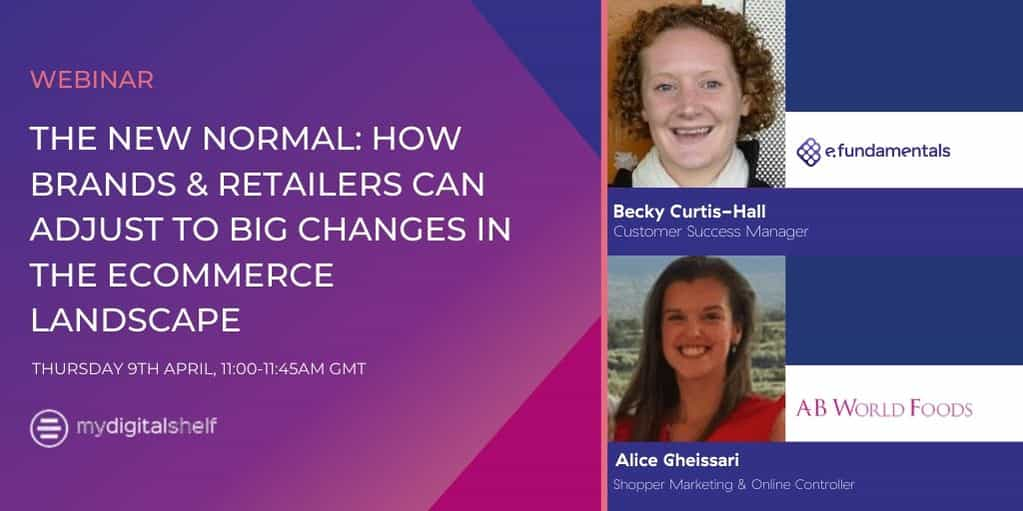
Missed the webinar? Watch it again for free here
Grocery shopping is going through the roof
UK supermarkets are experiencing a shopping bonanza as consumers rushed to stockpile on groceries in the wake of a national Covid-19 lockdown spending an extra £1.9bn on food and drink mid March compared to the same four-week period in 2019. With Britons making nearly 80m extra grocery shopping trips that month, Nielsen, a market researcher, estimates that more than 600,000 households have tried online shopping for the first time in the week analysed.
As demand for online delivery slots is surging, retailers have taken different approaches to try and adapt to the changes, introducing temporary measures from Ocado stopping to deliver bottled water to Asda adding 300, 000 additional slots to its online delivery operations. While retailers are making an extra effort to increase capacity for deliveries and click and collect slots, some have also introduced measures to curb stockpiling e.g. temporarily banning multipack and multi-buy offers. Some big retailers however have been criticised for not passing on the associated savings to the end consumer.
What is the 'New Normal' then?
The concept of the New Normal’ was described by Customer Success Manager Becky Curtis-Hall as follows:
“I’d like to see the new normal as a period after a great deal of change of about 12-16 weeks with the change being reflected in shopper behaviour [however] while I’m not convinced that there’ll be many long term changes for the UK / IR market in the long term there are aspects that brands and retailers will need to adapt to in the short to medium term”
Hence, it is not the things that are currently happening, but the influence of those things in a future period that brands and retailers need to keep a close eye on.
There are three changes happening now that may influence future behaviour:
1. Increased demand
2. Range changes
3. Fewer promotions
Let’s go into these potential changes in more detail: as illustrated earlier, demand is surging across categories from food to health and beauty and various other ancillary categories. Looking at the Ocado example mentioned previously, in a period of increased demand retailers are looking at ways to change the range or in this instance ceases to sell certain items to allow the most urgent consumer needs to be met. With many retailers calling for range rationalisation from brands, the questions you need to ask yourself and your business are:
- How does this influence your profits and route to market?
- Will demand for your products be met elsewhere and if the overspill demand goes elsewhere, will shoppers return or stay away?
- How much of these changes will become newly ingrained shopper habits?
Lastly, with new promotion policies for brands currently in place, brands will need to develop plans of how to add price cuts back in or use other promotional mechanics to offset missing profits from more lucrative multibuys for the remainder of the year.
Ready to drive your eCommerce growth? Take a free product tour and see what insights you can be using to drive your online performance.
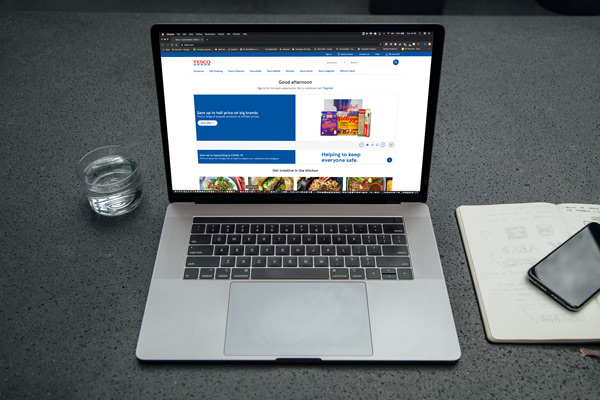
The first-time online shopper: a small opportunity window for brands
Just like a brand reputation can be lost in an instant so too can first time shoppers be lost in a matter of a few clicks. Regardless of whether certain demographics are prioritised in times of crisis as discussed in the webinar, there are three main things to consider for the first time shopper experience for both brands and retailers looking to drive shopping conversions:
- Visibility. First time shoppers need to be able to find your products with ease and at the first attempt. Make sure your products are easy to find through gold standard product names titles and descriptions and your online product images clear and engaging to the online shopper. Retailers should make the navigation clear, simple and easy to understand where the shopper is in the store at any given moment.
- Practicalities. Consider a decline in eyesight with certain demographics or level of tech savviness. Are your product descriptions easy to read, clear and packaging imagery informative, accurate and not confusing. Do your products inspire a shoppers buying journey leading them to purchase related or inspirational products such as recipe adoptions?
- Clarity in signposting. Ensure that your product’s nutritional as well as brand compliance information is appropriate. Not only do different demographics have varying dietary requirements; failing to include specific terms in your back of pack description can again lead to a missed opportunity for the shopper to find your product.
With many shoppers looking to buy things online for the first time, not fixing the basics can be detrimental to your business’ bottom line. Brands should ensure product descriptions match the shoppers search terms and that the brand inventory reflects the product in the best way it can. It should be at least web optimised at best fit for a mobile experience. “Take inspiration from non-grocery websites” Becky Curtis-Hall points out. Often fashion retailers lead the way for how shoppers filters change based on the category while browsing. Avoid simple mistakes such as cookie banners preventing first timers to click on purchase buttons. Finally, think about the shopping experience through from the first time to the third to foster repeat shopping behaviour.
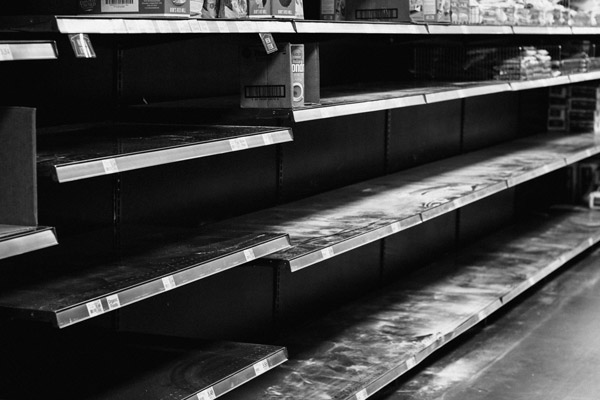
Shoppers adjust their basket mission
The empty shelf has quickly evolved as a usual suspect across the media during the onset of the pandemic with people stockpiling toilet paper and other ambient store items. With nations across Europe now grappling with the ‘everyday of lockdown’ people’s consumption across all food and drink categories has shifted indoors. Rather than ‘lunching al desko’, families are now sharing most meals at home. Treats like a hot beverage have started to be replicated indoors with our speaker admitting she's missing her cappuccino during her morning commute. Similarly the consumption of pub’ reminiscent alcoholic beverages has shifted towards the living room; Brands in this category will have noticed the uptake. For category managers this creates the need to make relevant customer journeys and stories both in store and online to cater to the changing consumption behaviours or products.
In particular, however, categories that have not been a regular ecommerce purchase have seen an increase - a brand selling snack type consumer goods should take the time now to ensure their products are easy to buy across their trusted retailers. With families cooking more at home, brands and retailers could support shoppers in recreating the restaurant experience, inspire how to make cooking more interesting or support easy recipes for families that juggle working from home and entering kids in the same space.
How about a free consultation? Learn how we can support you in winning online today!
New Normal for retailers
Adjusting to the new normal for retailers means addressing three key issues:
- Persuading long time shoppers to come back. Think about a potential for preferential treatment option in the future
- Getting first time shoppers to return for an online shop for their second and third weekly grocery shop and keeping them.
Retailers have a big opportunity in how they communicate slot availability or out of stocks and substitutions to their customer base with engaging and personalised email and on site content to maintain trust. As many retailers split their online orders between store pick and warehouse fulfilment based on customers delivery address retailers should be mindful of availability impacts across instore and online order fulfilment and supply chain implications.
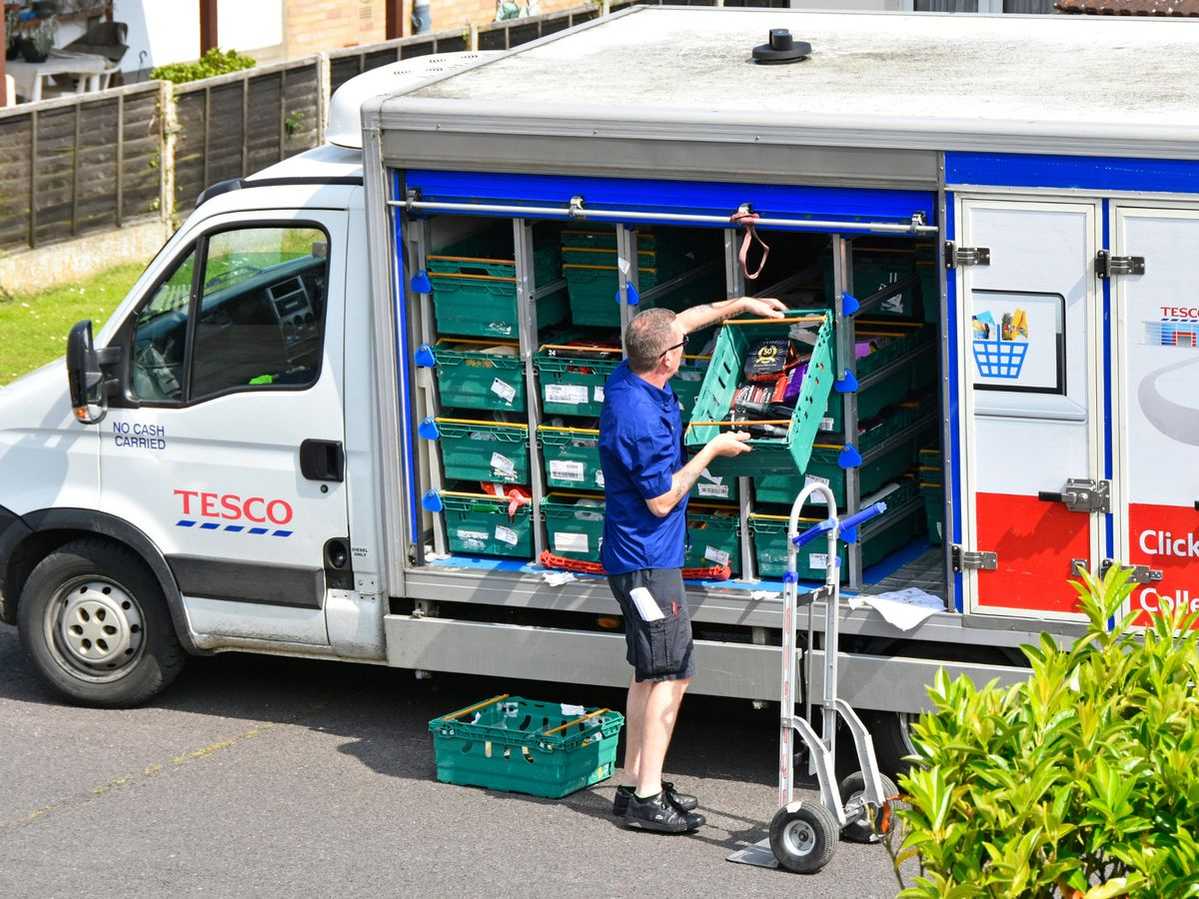
New Normal for brands
In essence, the longer term view is that consumers remember how brands act in a crisis, what people do and what they don’t want to see. Modern day examples of brands acting constructively include e.g. British brewer Brewdrog turning to produce hand sanitiser while others brands have failed with inappropriate campaigns. With many brands putting a pause on their current shopper marketing it’s important to evaluate what this means for their Joint Business Plan (JBP) spend to avoid being left with an issue at the end of the year. Rather take the time now to plan ahead for the same time next year to lap these incredible sales that are going on right now.
Conclusion
Brands and retailers have to consider three changes that are happening now that may influence future buying behaviour:
- Increased demand
- Range changes
- Fewer promotions
Yet it will all depend on your category. The key point overlaying this is whether as a brand or retailer you can track and understand shopper behaviour in your specific category. Ecommerce has become an ever growing opportunity so those responsible for driving the strategy in this field should feel encouraged to push their agenda. Having the right data analytics provider will support brands in driving profit and sales strategically as the insights will help brand or category managers focus on the areas that need improvement from search to pricing and promotion. Also being involved and understanding the complexities of one’s brand supply chain i.e. knowing how and when you deliver into a retailer at the moment can have a massive impact. For retailers, the key driver will be a good end to end experience from first shop to subsequent ones, including stock levels and specifically average pricing.
Ultimately, Brands need to be aware of how they act now will likely influence shoppers in the future, many of whom will try online grocery shopping for the first time as well as inspire them in the present. The opportunity to build brand loyalty now is heightened. Those that manage to prioritise their company’s ecommerce strategy during these exceptional times will come out stronger in the immediate and long term future.

Looking to accelerate your ecommerce growth? Talk to our webinar Talk to our team and see how we can help shape your eCommerce growth.
All the digital Shelf Analytics You Need to Succeed at Speed & Scale
See why world leading brands choose e.fundamentals for actionable digital shelf insights
Request A demoLatest Resources

CommerceIQ Launches Global Retail Ecommerce Management Platform Combining Sales, Supply Chain, Retail Media, and Digital Shelf with e.fundamentals Acquisition
Ecommerce platform enables consumer brands to grow market share profitably in today’s inflationary and supply-constrained environment through intelligent automation, supporting over 450 omnichannel retailers in 41 countries.

e.fundamentals becomes a CommerceIQ company
e.fundamentals has been acquired by CommerceIQ, the leading Retail Ecommerce Management Platform, headquartered in Palo Alto, California. Consumer brands can now harness one global software platform to power profitable market share growth across all major retailers.

5 strategic pricing opportunities CPGs should focus on now
As tensions run high between retailers and suppliers, CPGs need to be smarter than ever about strategic pricing. Here’s how to use digital shelf analytics to hold your own in tough negotiations.
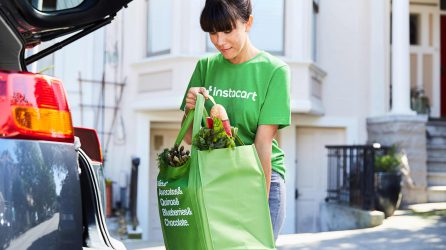
What the smartest CPGs get right about selling on Instacart
This post has been updated and was originally published March 30, 2021. It's time CPGs get ready to win on Instacart. So read and learn: What's all the hype around…

5 optimization tactics to grow digital shelf sales
This post has been updated and was originally published May 14, 2020. Consumer goods companies (CPG) continue to grapple with enormous shifts to the industry as the eCommerce boom continues…

5 tactics to grow online sales for category managers
Category management has changed. We've highlighted the 5 tactics to help you scale your growth on the digital shelf at speed.
View Our Most Popular resources to help you learn and win on the digital shelf.

The Ultimate Guide to Content Management on the Digital Shelf

The Digital Shelf Cast - Listen to our latest episode





